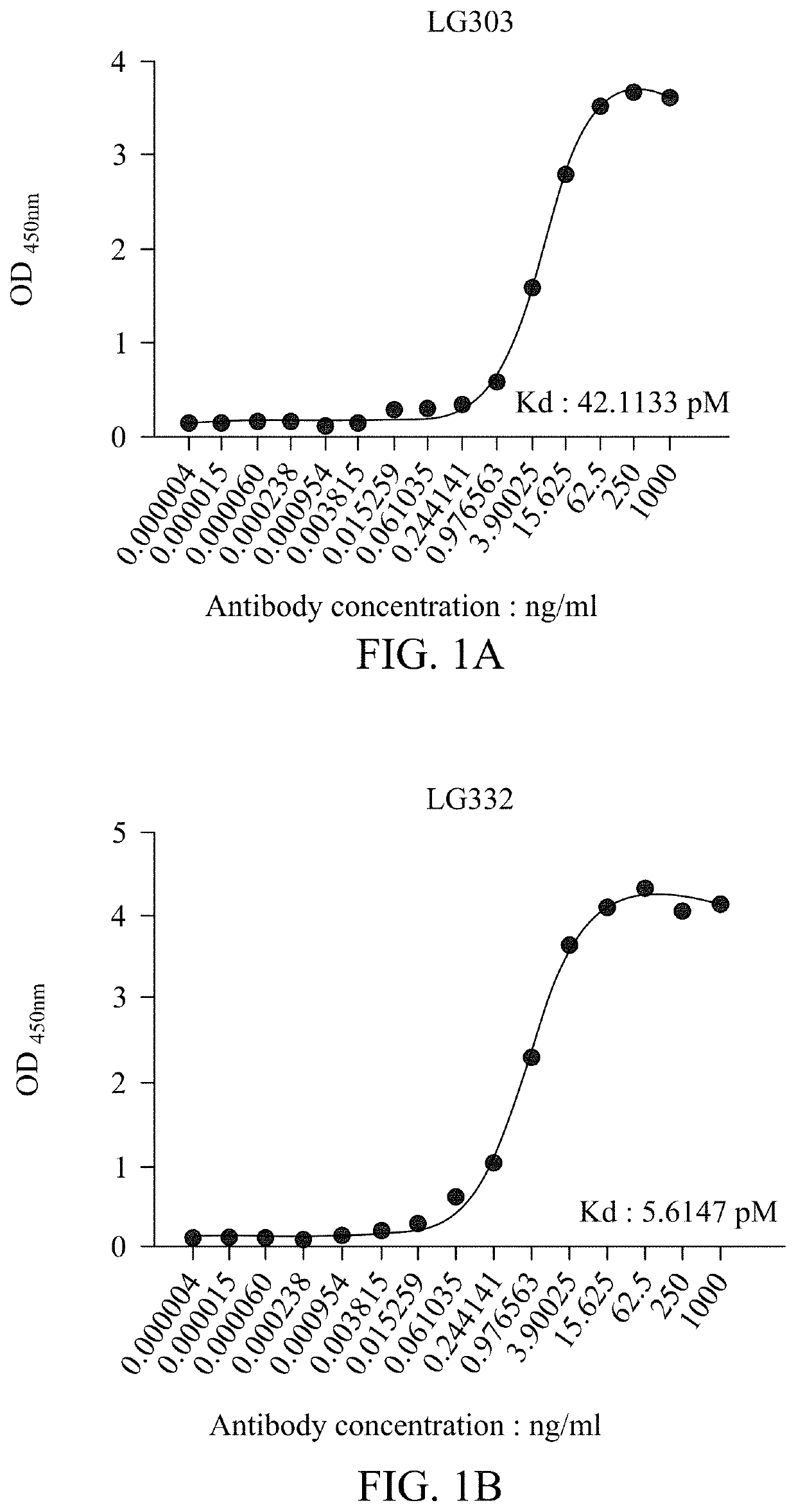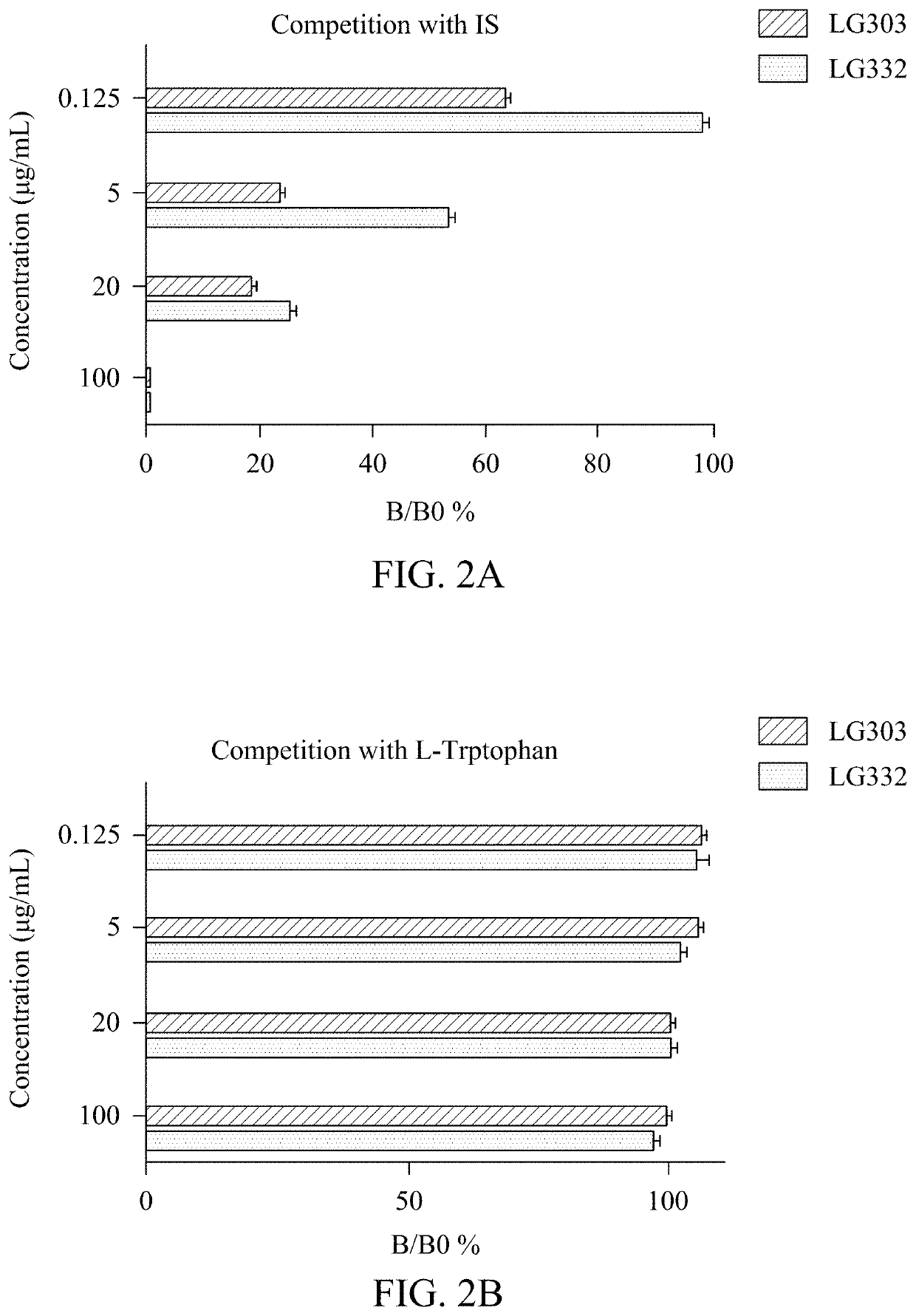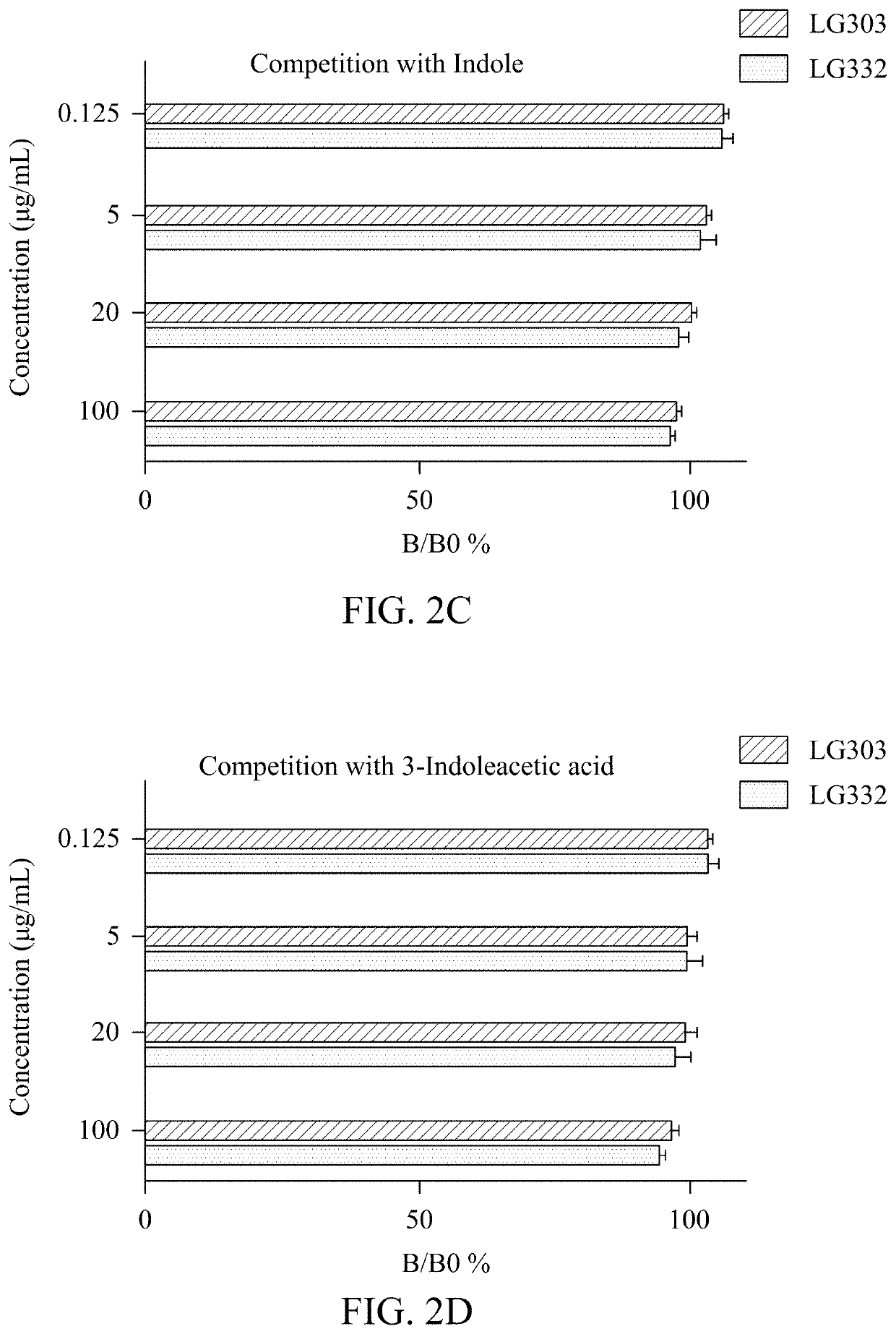Compositions of isolated monoclonal antibodies and/or antigen-binding fragments thereof against indoxyl sulfate and uses thereof
a technology of monoclonal antibodies and indoxyl sulfate, which is applied in the field of antigen-binding fragments, can solve the problems of permanent loss of kidney function, dangerous accumulation of waste, and severe electrolyte disturbance, and achieve excellent sensitivity and dynamic breadth of detection
- Summary
- Abstract
- Description
- Claims
- Application Information
AI Technical Summary
Benefits of technology
Problems solved by technology
Method used
Image
Examples
example 1
on of Antigenic IS Conjugates
[0103]To prepare a complete antigen from IS of a hapten, its potassium salts (Santa Cruz Biotechnology) were chemically coupled with a panel of carrier materials: the Imject™ Blue Carrier™ Protein (BCP, Thermo Scientific), bovine serum albumin (BSA, Thermo Scientific) and agarose gel beads crosslinked by DADPA (diaminodipropylamine) (CarboxyLink™ Coupling Gel, Thermo Scientific). In brief, 10 mg of IS in 1 mL PBS was mixed with three carrier materials at the equal preparation (10 mg / mL in PBS) in a tube, respectively. The 2-mL mixture was added with 0.25 mL 37% formaldehyde or 50% glutaraldehyde and incubated at 50° C. for 72 hours (the Mannich-type reaction (17). After the coupling reaction, IS-carrier protein conjugates were purified by chromatography with a column of Sephadex G-25 resin (GE Healthcare) and their concentrations were determined by the Bradford reagent (Bio-Rad). As for the IS-DADPA agarose conjugates, coupled gel beads were washed three...
example 2
n of Anti-IS mAbs by the Hybridoma Technique
[0104]Mice (8-10-week-old female BALB / c) were immunized with antigenic IS conjugates prepared as above and two immunization routes were adopted. One is conventional intraperitoneal (IP) immunization. In this route, IS-BCP / IS-BSA conjugates (50 μg in 100 μL PBS) or IS-DADPA agarose conjugates (100 μL) were mixed with equal volume of Complete Freund's Adjuvant (CFA, Sigma-Aldrich) or Incomplete Freund's Adjuvant (IFA, Sigma-Aldrich). Each mouse was received four immunizations in four weeks, including the first priming and three boosters. In the other route of direct spleen immunization. 5 μg of IS-BCP conjugates in 5 μL PBS was first injected to spleens of five mice with 34G needle. If antigenic responses were successfully primed, these mice were subsequently boosted with IS-BCP conjugates (50 μg in 200 μL IFA) for three times through subcutaneous (SC) injection. Before fusion with myeloma cells, IS-binding splenocytes were enriched by attac...
example 3
ve ELISA to Test mAb Specificity
[0105]In competitive ELISA described here, anti-IS mAbs or IS conjugates are interchangeably to assume the free analyte or immobilized catcher. Which role these two reactants being appointed depends on experimental design.
[0106]In the case of using anti-IS mAbs as the free analyte (IS conjugates are coated on microtiter plates), a secondary antibody like HRP-conjugated goat IgG against mouse IgG.Fcγ fragment might be employed as reporter. Concentrations of IS conjugates for plate coating range from 50 ng / mL to 50 μg / mL. Anti-IS mAbs can be used at a range between 10 μg / mL and 10 μg / mL.
[0107]When anti-IS mAbs are immobilized as catchers, the IS analyte should be conjugated with an enzyme reporter for plotting a standard curve, i.e. HRP in this case. Coating can be effectively performed at a concentration between 1 ng / mL to 50 μg / mL. IS-HRP conjugate can be prepared by the Mannich-type addition shown in the previous section, and working concentrations r...
PUM
| Property | Measurement | Unit |
|---|---|---|
| volume | aaaaa | aaaaa |
| concentration | aaaaa | aaaaa |
| concentration | aaaaa | aaaaa |
Abstract
Description
Claims
Application Information
 Login to View More
Login to View More - R&D
- Intellectual Property
- Life Sciences
- Materials
- Tech Scout
- Unparalleled Data Quality
- Higher Quality Content
- 60% Fewer Hallucinations
Browse by: Latest US Patents, China's latest patents, Technical Efficacy Thesaurus, Application Domain, Technology Topic, Popular Technical Reports.
© 2025 PatSnap. All rights reserved.Legal|Privacy policy|Modern Slavery Act Transparency Statement|Sitemap|About US| Contact US: help@patsnap.com



